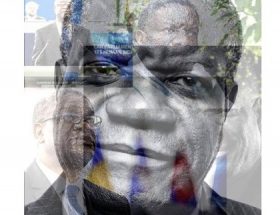“Afghan Girl” was first published on the front cover of National Geographic in June 1985.
To date, it is known as the most popular image photographer Steve McCurry has ever captured and is one of National Geographic’s most recognizable images. It has even been compared to Leonardo da Vinci’s famous painting of the Mona Lisa. “Afghan Girl” is known for the captivating look of a young girl with green eyes in a red headscarf. Her portrait was captured in a refugee camp in Pakistan while the Soviet occupation was taking place in Afghanistan.
In a recent interview with NBC’s Kate Storm, McCurry sat down to discuss his creative work and vision. He reveals that all he ever wanted to do was travel. When he was 19, he moved to Europe and lived there for a year. Shortly after, in college, he majored in filmmaking, but had difficulty getting started after graduating. As a result of not finding immediate success, he took the photography route by working for a local newspaper. Fed up with the routine of it all, he reverted back to his original ambition which was to travel. In his mid 20’s, he booked a one-way ticket to India and stayed for about two years. It was during this time that he ventured into Afghanistan, which at the time, was considered a dangerous war zone. What is so captivating about McCurry’s work during this time is the fact that his work was all captured through film, which is known to be a very time-consuming process. While in India and Afghanistan, he captured several different images, but was never able to immediately see the work he captured. McCurry would send his family his rolls of film so that they could be developed and sent to magazines in hopes that his work would pick up.
Initially, some of his work was published in the magazine Geo and in the New York Times as well. However, his photography really took up once the Soviets invaded Afghanistan. It was during these times that his work was, as he states, “in demand, all over the world.” The image of “Afghan Girl” served to tell the tragic reality that was taking place in Afghanistan. When photographed, McCurry recalls that there were around 3 million Afghans living in refugee camps as a result of their villages being destroyed. Furthermore, he mentions that what was truly captured about “Afghan Girl” was her “dignity and perseverance” as the image shows her unfortunate circumstances, and simultaneously highlights how those circumstances couldn’t bring her down.
Her face was that of determination and strength.
The two years McCurry spent in these countries assured him that this was his ultimate passion and something he was meant to do for the rest of his life.
While “Afghan Girl,” is his most famous image, he is recognized for his work abroad in several other historical moments such as the Iran-Iraq War, the Lebanon Civil War, Cambodian Civil War, etc. His image variety ranges wide all throughout the world and has been praised for decades. While known for his work abroad, McCurry has also been known to contribute domestically to his home country in the United States.
After spending a month in Tibet, McCurry returned to his apartment in New York City on September 10th, 2001. The morning after, he woke up to the traumatic turmoil that was taking place right outside his window. Both of the World Trade Centers were on fire about to crumble to right before him. With his photographer instinct, he left his apartment to capture as many images as possible despite the horrific scene around him. The reason for this was that capturing these moments was a significant way of capturing history. These images are still shared time and time again to capture the aftermath of what was left on Ground Zero.
McCurry’s work provides an experience for everyone whose eyes look at his work.
While he is more known for photographing people, his other work has been influential to history and preserving the importance of these significant events. McCurry’s work is much deeper than just the click of a button. His passion for creating and capturing helps pave the way for creating a story that cannot be told otherwise.
His photographs are stories that continue to inspire, influence and connect people from all over the world, even decades after they were taken.
art by: Sarah de Surville




